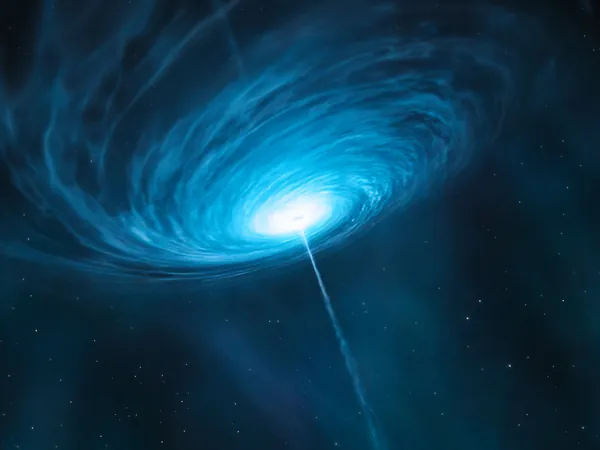
The Startling Truth Behind the Universe's Largest Black Holes: They May Have Tiny Beginnings!
2024-11-19
Author: John Tan
Introduction
New groundbreaking research is shaking the foundations of astrophysics by suggesting that the universe's most colossal black holes may have originated from minuscule seeds right at the dawn of time. This revelation could transform our understanding of cosmic formation and the evolution of galaxies as we know them!
The Mystery of Supermassive Black Holes
For decades, astronomers have grappled with puzzling observations of supermassive black holes that existed when the universe was less than a billion years old. This scenario seems counterintuitive, as prevailing theories hold that black holes typically form from the catastrophic deaths of massive stars, followed by a gradual growth process involving mergers or the accumulation of surrounding matter. However, building supermassive black holes weighing hundreds of millions of solar masses in such a brief period remains a formidable challenge.
A New Hypothesis Emerges
The quest for new explanations has led scientists to explore alternatives, and a recent study is shedding light on a surprising hypothesis: these gigantic entities might trace their origins back to the chaotic moments of the Big Bang itself.
Stephen Hawking's Contribution
In the 1970s, the legendary physicist Stephen Hawking proposed that the chaotic conditions in the early universe may have led to random fluctuations of matter that collapsed into primordial black holes. These ancient black holes, unlike their stellar counterparts, could still exist today and have even been suggested as candidates for the mysterious dark matter that permeates our cosmos.
Challenges of Observational Evidence
Nevertheless, observational evidence has placed stringent limits on the number of primordial black holes that could exist. If they were prevalent, we would have more tangible evidence of their presence by now. Yet, the new research posits that these primordial black holes don’t have to be abundant; they could comprise less than 1% of the universe's total mass to still play a pivotal role as seeds for the formation of supermassive black holes.
The Formation Timeline
The beauty of this theory lies in its timeline—if these tiny black hole seeds were created in the universe's infancy, they could have gradually accumulated mass and merged with one another, especially during the formative years of galaxy formation, roughly the first few hundred million years after the Big Bang. This suggests that supermassive black holes could have developed in tandem with the first stars, essentially paving the way for a universe in which these colossal structures were fully formed by the time galaxies and stars became prominent.
Future Research Directions
While this innovative model offers a cohesive explanation for the observed population of supermassive black holes in the young universe, the researchers acknowledge that this is merely the initial phase of their exploration. The next significant step involves refining these models and integrating them into more comprehensive simulations of the early universe's evolution to assess the validity of this fascinating scenario.
Conclusion
With each passing discovery, our understanding of cosmic evolution deepens, and the mysteries of the universe become ever more intricate. Stay tuned as scientists continue their quest to unravel the secrets of the cosmos—could the universe’s largest black holes really have such humble beginnings? The implications are truly astronomical!


 Brasil (PT)
Brasil (PT)
 Canada (EN)
Canada (EN)
 Chile (ES)
Chile (ES)
 España (ES)
España (ES)
 France (FR)
France (FR)
 Hong Kong (EN)
Hong Kong (EN)
 Italia (IT)
Italia (IT)
 日本 (JA)
日本 (JA)
 Magyarország (HU)
Magyarország (HU)
 Norge (NO)
Norge (NO)
 Polska (PL)
Polska (PL)
 Schweiz (DE)
Schweiz (DE)
 Singapore (EN)
Singapore (EN)
 Sverige (SV)
Sverige (SV)
 Suomi (FI)
Suomi (FI)
 Türkiye (TR)
Türkiye (TR)